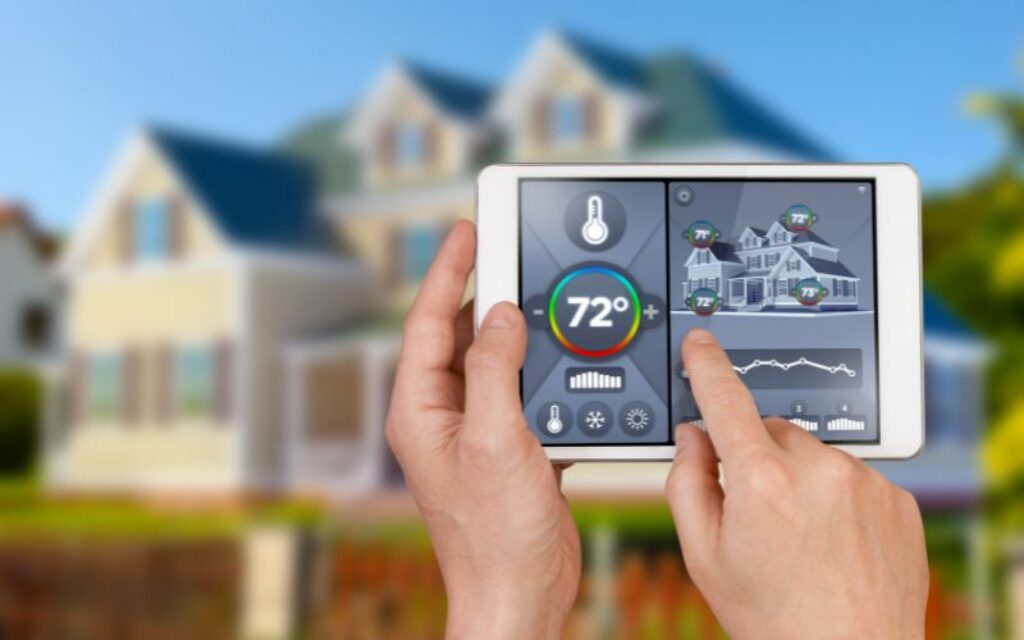Temperature is a crucial factor in the quality of air indoors. While most people understand that temperature control is vital, only some are familiar with the connections between indoor air quality and temperature control.
This article will explain why temperature control is essential for your home environment, how it impacts indoor air quality, and what steps you can take to ensure the air inside your home is comfortable and healthy.

When the weather outside changes, the temperature inside your house will also change. During warmer summer months, temperatures within a home can easily reach the 80s or 90s if proper ventilation techniques are not used.
This kind of heat buildup can be very uncomfortable and have long-term consequences on your health. Extended exposure to intense heat can cause dehydration, lethargy, and respiratory distress. Over and above the health risks of exposure to extreme temperatures, high humidity levels can promote mold growth and other contaminants in the air.
In contrast, colder months tend to bring problems with stagnant air, which occurs when a room is not adequately supplied with fresh air from outside sources; as a result, indoor pollutants such as dust and dander become trapped inside. Poor ventilation also increases moisture levels, leading to mould and other unhealthy allergens thriving within your home environment.
Beyond simply feeling more comfortable in your home during different times of the year, proper temperature control directly impacts indoor air quality. The EPA recommends using air purifiers and temperature control systems to reduce lingering toxins and other unwanted particles.
Air purifiers are excellent at removing dust, pet dander, and pollen from your home’s atmosphere; some even come with features such as HEPA filters or activated carbon for extra protection.
Additionally, controlling humidity and temperature can help maintain healthy levels for you and your family. Humidity should generally be between 30-50% to prevent mold growth, while temperatures should remain between 68-78 degrees Fahrenheit, depending on the season. This combination of proper ventilation and temperature management will ensure your indoor environment stays safe and comfortable all year round.
It is crucial to keep an eye on changes in temperature over time. Minor adjustments and changes can make a considerable difference in the air quality of your office or house and should be a possible living environment.
Also Read: Tips to Control the Temperature in Your Florida Home
Choosing the best HVAC system for your home
When purchasing a new HVAC system for your home, you should consider several vital factors. Not only is the suitable model important for temperature control and energy efficiency, but you also need to think about size, cost, installation procedures, and maintenance.
First, determine the correct size of the HVAC system for your space. Undersizing or oversizing can severely affect air quality because an undersized unit cannot adequately heat or cool your office or home, leading to temperature fluctuations throughout the house. An oversized unit can cycle too quickly, resulting in inefficient performance and higher energy bills, and to determine the appropriate size of the HVAC system for your living space, consider both the square footage of your office or home and its insulation level.
Cost is also an essential factor when deciding on an HVAC system. You want something that fits your budget; however, purchasing a cheaper model may cost more in the long run if it performs less well than more expensive options. Additionally, more expensive upfront costs often result in lower monthly operating expenses over time due to improved efficiency levels.
Installation is another critical consideration when selecting an HVAC system for your home because incorrect placement or improper wiring could lead to serious safety risks. Be sure to follow all the HVAC manufacturer instructions carefully and consult with local professionals like HVAC services in Buckeye, AZ, if you need clarification on any steps during installation.
Additionally, ensure all filters are clean before use; dirty filters can cause dust buildup and reduce airflow throughout your home environment.
Regular maintenance must be done for an HVAC system to work correctly and safely over time, which includes checking fan blades periodically for dirt buildup while regularly cleaning the area around vents and changing air filters at least once every three months, depending on usage levels. Doing so will ensure better air quality inside your home while extending your unit’s lifespan and improving its overall performance.
The bottom line
By understanding how temperature control affects indoor air quality, you can take steps to significantly improve your home environment and enjoy a safe, comfortable space for years to come.
Investing in proper ventilation systems, using air purifiers, and controlling humidity levels will all help keep your family healthy and happy while ensuring the longevity of your home. With careful attention to detail, you can maintain an optimal indoor atmosphere that is enjoyable and beneficial for everyone involved.